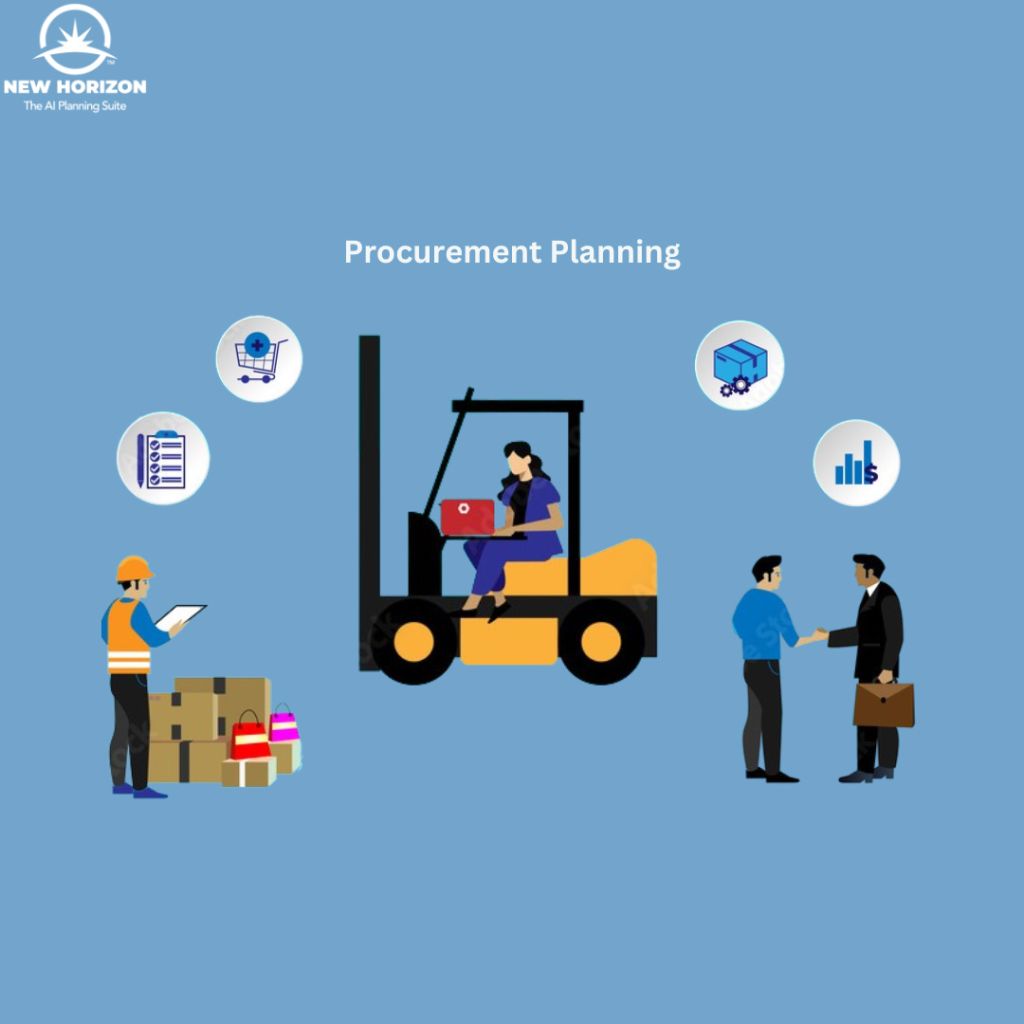
Introduction: Procurement Planning for Distribution-Intensive Businesses
Procurement planning is not a widely recognized category of supply chain software, but it should be. Procurement planning functionality (essentially the planning of future purchase orders) is typically a subset of broader supply planning applications that plan manufacturing work orders, inventory levels, shipments, as well as purchase orders, to meet demand. However, if you are in a distribution-intensive, low-margin business, where procurement costs represent a significant percentage of total revenues, then you will want something more. Such businesses, including wholesale distributors, retailers, and foodservice operators, can increase profits significantly by using a dedicated procurement planning software solution.
Modern supply planning solutions can do an excellent job of recommending a sequence of order quantities, following your specified ordering policy and taking into account typical supplier constraints. Such constraints include things like lead times, supplier capacity, and minimum order quantities. The resulting plan should maintain adequate safety stock levels for each purchased item while reducing inventory costs. However, suppose you are in one of the distribution-intensive industries described above. In that case, you will want to address additional practical considerations such as, how do I maximize container and truck load utilization, how much of an investment buy should I make when offered a temporary price reduction, and should I purchase new inventory or transfer excess inventory from one warehouse to another?
This article outlines five key challenges faced by buyers that can be addressed by a new type of procurement planning software, which we call a “buyer’s workbench.” Such a solution can help buyers convert a sequence of planned orders into optimized purchase orders that account for the above-mentioned practical considerations and squeeze every penny out of procurement costs.
Container and Truck Load Optimization
Truck load optimization is increasingly vital in supply chain management because it can significantly reduce transportation costs and improve efficiency. Historically, there has been a disconnect between supply chain planning and truck load optimization, with transportation capacity often not considered during the planning stages. This results in underutilized transportation capacity, contributing to higher costs per unit shipped. The inefficiency is exacerbated by factors like driver shortages, low driver utilization, and empty miles.
To address this, incorporating truck load optimization into procurement planning is essential. This involves considering transportation capacity and schedule constraints before planning purchases or shipments, and optimizing order quantities to fill trucks as close to 100% as possible. This approach prioritizes urgent orders and considers routing, allowing for more efficient receiving and reducing the need for additional transportation.
By addressing truck loading during supply chain planning, companies can substantially increase truck utilization and reduce materials shortages and receiving costs. This not only yields operational efficiencies but also contributes to a lower carbon footprint, as fewer truck miles are driven. The approach exemplifies how integrating planning with truck load optimization can result in significant cost savings and operational improvements in the supply chain.
For more on this topic, see my article Improving Truck Load Optimization with Better Supply Chain Planning, which includes research data on truck capacity utilization in the U.S. and references a study on how Home Depot improved container utilization for overseas imports by 12 percentage points.
Trading-Off Inventory Transfers Against New Purchases
Inventory balancing, or the periodic transfer of inventory from locations with surpluses to those with deficits, is a crucial but often underutilized supply chain strategy. This process becomes necessary due to unexpected demand shifts, production and delivery delays, and other supply chain disruptions. When inventories are not balanced, companies face high inventory holding costs at surplus locations and poor service levels at locations with low inventory.
Faced with unbalanced inventory, companies have three options: do nothing, which can lead to high costs and poor service; produce or purchase more inventory, incurring additional holding and purchasing costs; or engage in inventory balancing. The latter involves transferring excess inventory to locations needing it, thus improving service levels without increasing overall holding and purchasing costs. Modern supply chain analysis techniques can effectively identify and quantify inventory balancing opportunities that maximize profitability.
Deciding on inventory balancing involves weighing the benefits of improved service levels at undersupplied locations and reduced inventory costs at oversupplied ones against the additional transshipping costs. This calculation must consider factors like product expiration dates and shipping efficiencies, such as the preference for full truckloads. Timing is also crucial; determining the frequency of inventory balancing (e.g., every 2 weeks) and devising a time-phased transshipping plan can prevent unnecessary round-trip costs and should be synchronized with reduced purchasing at destination locations. Finally, integrating inventory balancing into the regular supply planning process is vital, ensuring it utilizes the same data and process management as normal inventory replenishment.
For more details, including a description of research done at MIT and Georgia Tech, see my blog Inventory Balancing: Research from Dell and Boston Scientific.
Optimizing Forward Buying Decisions
Forward buying, also known as investment buying, is a common strategy for wholesalers and retailers to take advantage of promotional discounts or lock in lower prices before expected price increases. This practice involves purchasing larger quantities than usual to take advantage of lower prices.
Forward buying is not without its challenges and risks. One significant concern is the ability to sell the extra inventory promptly. Holding onto increased inventory levels for too long can lead to fire sale situations or write-offs, especially if market demand shifts unexpectedly. Moreover, forward buying necessitates an increase in working capital, potentially leading to cash flow issues if the inventory is not sold quickly enough.
In determining the optimal quantity for forward buying, several factors must be considered, including inventory carrying costs, forecasted demand, order handling costs, borrowing costs, anticipated price changes, and product expiration dates. This calculation is complex and dynamic, needing frequent updates with each forward buying opportunity. While traditional spreadsheet methods are possible, they are prone to errors and inefficiencies. A more integrated approach within an enterprise supply chain system is recommended for standardization, accuracy, and quick decision-making to capitalize on forward buying opportunities in a dynamic environment.
For a detailed discussion on this topic, see my article Forward Buying and Inflation. (While inflation is less of a concern now, the basic principles involved remain the same.)
Level-Loading Warehouse Receiving to Overcome Supply Chain Bottlenecks
Due to poor planning, warehouse receiving capacity is often mismatched with inbound delivery volume. When you don’t have enough receiving capacity, it can lead to rushing the process, injuries, and detention fees for excessive delay times. And if you have too much capacity and workers are idle, you will incur excess labor costs that hurt your bottom line.
To address these challenges, a shift to more granular planning is essential. Rather than planning the number of deliveries per week, which is typical in supply chain planning, you can plan at the daily level and ensure that delivery schedules align with the number of available delivery slots, resulting in an even spacing of deliveries across the week. This approach smooths the flow of goods, prevents crunch times, and optimizes labor and resource utilization.
See my blog Planning for Warehouse Receiving to Overcome Supply Chain Bottlenecks to learn more about this and see research data from the American Transportation Research Institute (ATRI).
Ramping-Up Inventory for A New Distribution Center
When starting or transitioning to a new distribution center (DC), effective inventory management is crucial, especially for wholesalers and retailers dealing with company growth, peak business periods, acquisitions, store closures, or seasonal demand shifts. The process often involves a gradual transition rather than a single changeover date due to constraints like trucking capacity, training needs, and business risk mitigation.
A practical approach includes several key steps:
- Plan a Gradual Transition Schedule: Changeover by a fixed number of stores per time period is more manageable.
- Select Groups of Stores for Transition: Choose stores close to the new DC and in proximity to each other for each group.
- Prioritize Fast-Moving Items in Overflow Warehouses: Focus on fast-moving items during peak sales times.
- Schedule Resources, Employees, and Training: Ensure proper equipment, infrastructure, and trained personnel are in place.
- Split Aggregate Forecast by Week: Allocate the forecast between the old and new DCs according to the transition schedule.
- Ramp-Up Purchasing Plans for the New DC: Build inventory in the new DC in advance, considering supplier lead times.
- Ramp-Down Purchases at Old DCs: Adjust purchases to match the decreasing demand at the old DCs.
By taking such an approach to procurement planning for a new distribution center, companies can ensure a smooth transition while maintaining service levels and minimizing inventory costs. For a more detailed discussion of this issue, see my blog Ramping-Up Inventory for a New Distribution Center.
Other Reasons to Use an Advanced Procurement Planning Solution
The above are just some of the reasons why companies may want to use dedicated procurement planning software. Other challenges such a solution can address include:
- Postponing or expediting purchase orders based on updated inventory and demand forecast information
- Automating the planning of seamless item transitions by carefully monitoring demand and supply and adjusting purchases accordingly
- Evaluating the impact of alternative suppliers and substitute products, trading off costs and delivery times
- Planning a minimum order quantity for a group of related items rather than having to buy a minimum quantity of each item
- Consolidating orders for international ordering
- Making up for a vendor’s delay time by ordering early
Conclusion
Advanced procurement planning software can play a key role in increasing profitability in distribution-intensive, low-margin businesses. By addressing challenges such as container and truck load optimization, balancing inventory transfers against new purchases, optimizing forward buying decisions, level-loading warehouse receiving, and effectively ramping up inventory for new distribution centers, procurement planning software streamlines operations and reduces costs. In an era where supply chain management is increasingly complex and dynamic, investing in a dedicated procurement planning solution is not just an option, but a strategic necessity for businesses aiming to maintain a competitive edge and ensure profitability.
To Learn More
To learn about New Horizon’s product for procurement planning, go to Buyers Workbench.

